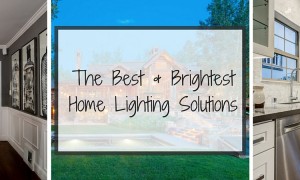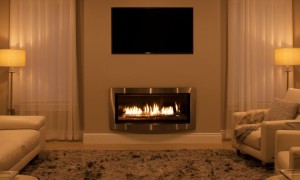As incandescent bulbs inch their way towards nonexistence, consumers are rethinking the way artificial lighting is used throughout the home. Light-emitting diodes (better known as “LEDs”) provide an environmentally friendly, energy-saving alternative to compact fluorescent lights (CFLs). Many consumers are familiar with LED illumination in TV sets, holiday decorating, and outdoor lighting, but LEDs also offer dynamic lighting options for home interiors.
Advantages of LEDs
The biggest drawbacks frequently heard regarding CFLs are the amount of time they take to reach full brightness (an agonizing 30 seconds, to those of us who grew up with incandescent bulbs) and their lack of adjustability, meaning they do not work with dimmer switches. Not only does the ability to control the amount of light shining in a room help to conserve energy, adjusting the brightness and focus of a light to fit certain individual tasks is also important. Compared to compact fluorescents, LEDs have longer expected lives — 25 to 30 years vs. seven to 10 years for compact fluorescents (although more frequent on/off switching of either type of lighting will decrease its life span).
LEDs Produce Dynamic Lighting
Dynamic lighting is important because it can complement or mimic daytime-to-nighttime changes in natural lighting filtering in through windows or skylights. Working with natural light changes affects our mood and energy levels. We desire more light around the dinner table or in our work area than we do when we are relaxing at night, reading or watching television, for example. Our bodies follow certain rhythms, and too much or too little light at a certain time of day can disrupt the pattern of our lives.
With directly controlled or built-in dimmers, rooms with LED lights can now shift and adjust, much the same way natural light does throughout the day. Technological advances have also improved the harsher colors noted in past generations of residential LED lighting. LEDs now come in a wider variety of hues, ranging from warmer whites (best for residential use) to a cool but stark brightness, which is more appropriate for commercial spaces.
How to Utilize LEDs in Your Home
According to Joan Konopka, lighting sales consultant at Denney Electric Supply in Ambler, Penn., the most popular ways to use LEDs in the home are by placing strip lights above and below kitchen cabinets and in tray ceilings. The added cost of LEDs is a factor for many consumers.
If you are thinking about integrating LEDs into your current home-lighting design but aren’t ready to install dynamic lighting, consider the ambient, task, and accent lighting in each room. Ambient light is sourced by general overhead lights, such as chandeliers, recessed lighting or other ceiling fixtures. LEDs can be used in place of halogen or CFL bulbs in these fixtures.
Task lighting is added into the mix to brighten areas where you work — for example, reading lights, lights around your kitchen work areas, or lighted bathroom mirrors. LED strips brighten work areas above kitchen countertops, and LED bars can be installed inside closets.
Accent lights enhance the look of a room or highlight a certain item. Think of candles set on tables, or picture lights placed on the walls to illuminate photos or artwork. LED flameless candles are a good example of accent lighting that can be turned on and off as needed.
To lower your energy costs and modernize your home’s interior, don’t forget about maximizing natural light in every room as well as replacing incandescent bulbs with environmentally friendly LEDs when possible.
Image Credit: Ken Doerr
[cf]skyword_tracking_tag[/cf]






